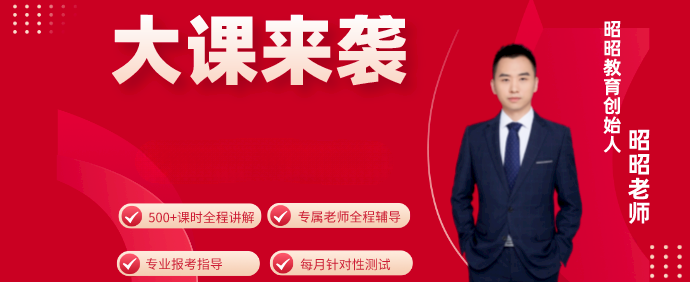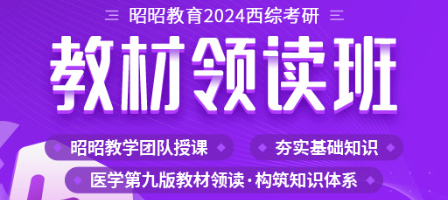
当前位置: 研招信息首页 > 历年考题(考生回忆版) > 正文
2013考研英语考题(考生回忆版)及参考答案解析
Section IUse of English
Directions:
Read the following text. Choose the best word(s) for each numbered blank and mark A, B, C or D on the ANSWER SHEET. (10 points)
People are, on the whole, poor at considering background information when making individual decisions. At first glance this might seem like a strength that
1 the ability to make judgments which are unbiased by 2 factors. But Dr Uri Simonsohn speculated that an inability to consider the big 3 was leading decision-makers to be biased by the daily samples of information they were working with. 4 , he theorised that a judge 5 of appearing too soft 6 crime might be more likely to send someone to prison 7 he had already sentenced five or six other defendants only to forced community service on that day.
To 8 this idea, he turned to the university-admissions process. In theory, the 9 of an applicant should not depend on the few others 10 randomly for interview during the same day, but Dr Simonsohn suspected the truth was 11 .
He studied the results of 9,323 MBA interviews 12 by 31 admissions officers. The interviewers had 13 applicants on a scale of one to five. This scale 14 numerous factors into consideration. The scores were 15 used in conjunction with an applicant’s score on the Graduate Management Admission Test, or GMAT, a standardised exam which is 16 out of 800 points, to make a decision on whether to accept him or her.
Dr Simonsohn found if the score of the previous candidate in a daily series of interviewees was 0.75 points or more higher than that of the one 17 that, then the score for the next applicant would 18 by an average of 0.075 points. This might sound small, but to 19 the effects of such a decrease a candidate would need 30 more GMAT points than would otherwise have been 20 .
1. [A] grants[B] submits[C] transmits[D] delivers
2. [A] minor[B] external[C] crucial[D] objective
3. [A] issue[B] vision[C] picture[D] moment
4. [A] Above all[B] On average[C] In principle[D] For example
5. [A] fond[B] fearful[C] capable[D] thoughtless
6. [A] in[B] for[C] to[D] on
7. [A] if[B] until[C] though[D] unless
8. [A] test[B] emphasize[C] share[D] promote
9. [A] decision[B] quality[C] status[D] success
10. [A] found[B] studied[C] chosen[D] identified
11. [A] otherwise[B] defensible[C] replaceable[D] exceptional
12. [A] inspired[B] expressed[C] conducted[D] secured
13. [A] assigned[B] rated[C] matched[D] arranged
14. [A] put[B] got[C] took[D] gave
15. [A] instead[B] then[C] ever[D] rather
16. [A] selected[B] passed[C] marked[D] introduced
17. [A] below[B] after[C] above[D] before
18. [A] jump[B] float[C] fluctuate[D] drop
19. [A] achieve[B] undo[C] maintain[D] disregard
20. [A] necessary[B] possible[C] promising[D] helpful
Section ⅡReading Comprehension
Part A Directions:
Read the following four texts. Answer the questions below each text by choosing A, B, C or D. Mark your answers on the ANSWER SHEET. (40 points)
Text 1
In the 2006 film version of The Devil Wears Prada, Miranda Priestly, played by Meryl Streep, scolds her unattractive assistant for imagining that high fashion doesn’t affect her. Priestly explains how the deep blue color of the assistant’s sweater descended over the years from fashion shows to department stores and to the bargain bin in which the poor girl doubtless found her garment.
This top-down conception of the fashion business couldn’t be more out of date or at odds with the feverish world described in Overdressed, Elizabeth Cline’s three-year indictment of “fast fashion”. In the last decade or so, advances in technology have allowed mass-market labels such as Zara, H&M, and Uniqlo to react to trends more quickly and anticipate demand more precisely. Quicker turnarounds mean less wasted inventory, more frequent releases, and more profit. These labels encourage style-conscious consumers to see clothes as disposable – meant to last only a wash or two, although they don’t advertise that – and to renew their wardrobe every few weeks. By offering on-trend items at dirt-cheap prices, Cline argues, these brands have hijacked fashion cycles, shaking an industry long accustomed to a seasonal pace.
The victims of this revolution, of course, are not limited to designers. For H&M to offer a $5.95 knit miniskirt in all its 2,300-plus stores around the world, it must rely on low-wage overseas labor, order in volumes that strain natural resources, and use massive amounts of harmful chemicals.
Overdressed is the fashion world’s answer to consumer-activist bestsellers like Michael Pollan’s The Omnivore’s Dilemma. “Mass-produced clothing, like fast food, fills a hunger and need, yet is non-durable and wasteful,” Cline argues. Americans, she finds, buy roughly 20 billion garments a year – about 64 items per person – and no matter how much they give away, this excess leads to waste.
Towards the end of Overdressed, Cline introduced her ideal, a Brooklyn woman named Sarah Kate Beaumont, who since 2008 has made all of her own clothes – and beautifully. But as Cline is the first to note, it took Beaumont decades to perfect her craft; her example can’t be knocked off.
Though several fast-fashion companies have made efforts to curb their impact on labor and the environment – including H&M, with its green Conscious Collection line – Cline believes lasting change can only be effected by the customer. She exhibits the idealism common to many advocates of sustainability, be it in food or in energy. Vanity is a constant; people will only start shopping more sustainably when they can’t afford not to.
21.Priestly criticizes her assistant for her
[A]insensitivity to fashion.
[B]obsession with high fashion.
[C]poor bargaining skill.
[D]lack of imagination.
22.According to Cline, mass-market labels urge consumers to
[A]combat unnecessary waste.
[B]shop for their garments more frequently.
[C]resist the influence of advertisements.
[D]shut out the feverish fashion world.
23.The word “indictment” (Line 3, Para.2) is closest in meaning to
[A]tolerance.
[B]indifference.
[C]enthusiasm.
[D]accusation.
24.Which of the following can be inferred from the last paragraph?
[A]Vanity has more often been found in idealists.
[B]The fast-fashion industry ignores sustainability.
[C]Pricing is vital to environment-friendly purchasing.
[D]People are more interested in unaffordable garments.
25.What is the subject of the text?
[A]Satire on an extravagant lifestyle.
[B]Challenge to a high-fashion myth.
[C]Criticism of the fast-fashion industry.
[D]Exposure of a mass-market secret.
以上是昭昭西医考研部分考题(考生回忆版)的展示内容,因为内容较多。小昭已经将考题(考生回忆版)全部整理放到附件中(包括答案),请自行点击下载即可使用。
免责声明:本站所提供的内容均来源于网络,如涉及侵权问题,请联系本站管理员予以更改或删除。


 扫码加入
扫码加入
 扫码加入
扫码加入
 扫码加入
扫码加入
 扫码加入
扫码加入
 扫码加入
扫码加入
 扫码加入
扫码加入

